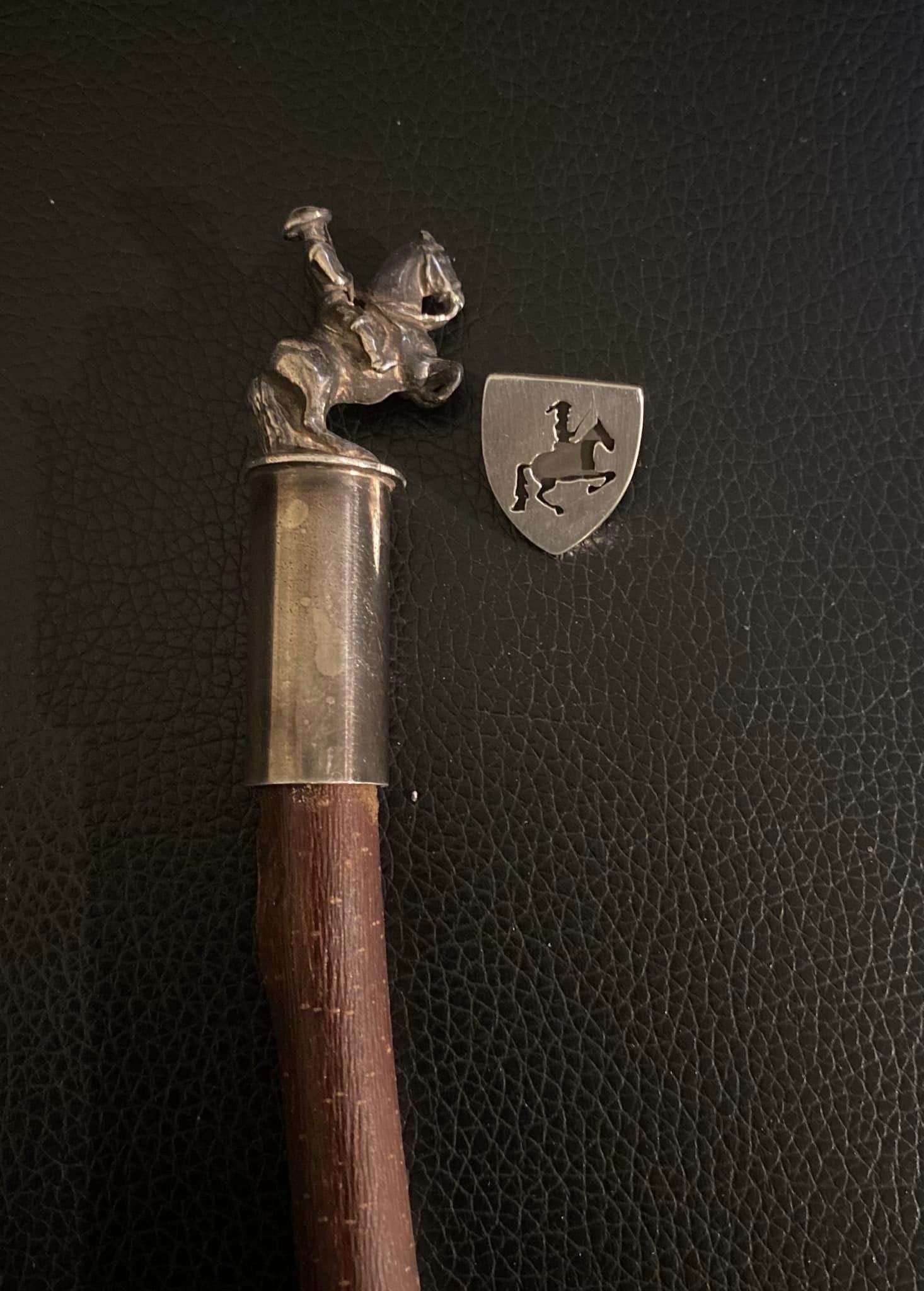Jacquie says….
WHO IS BENT BRANDERUP?
Bent Branderup is a Danish man who founded the Knighthood of the Academic Art of Riding in 1997 together with Egon von Neindorff to keep the Art alive. The members of this new Knighthood have been spreading the old knowledge, experiment with and keep on searching for new knowledge. The Knighthood of the Academic Art of Riding protects the European cultural inheritance combined with the modern ethical values for the interaction between horse and rider. The historical Knighthood’s level of skill of acceptance was equal to the level of piaffe, passage, pirouette plus an air above the ground, but it was necessary to lower the level of skill of acceptance, so that the Knighthood could again accept members. The level of a Squire is equal to that of a working rider creating a basic skillset for the Art of Riding.
The knighthood is a community of passionate horse people who share its fundamental ideals and have proven that they have a basic level of skills. It is an international academy with the main tasks of research and education, always aware of ethical aspects that concern the human-equine relationship. has dedicated his life to the rediscovery of the art of riding.
Bent has learned from Don Francisco Javier Garcia Romero, Nuno Oliveira, and Egon von Neindorff and he has studied the old masters books analysing historical paintings and equestrian sculptures.
He experimented with the theories of the different riding masters with modern scientific understanding overlayed onto the best of the old masters to create a deeper clarity of understanding using brain pooling within the Academic Art of Riding Knighthood who are comprised only of people who are currently able to pass the ridden Squire test as a minimum requirement. .
Great care was necessary to educate horses as important battles were lost or won from the back of a horse, especially during the period when swords were the main weapon and before hand held guns could be used in the battle field, and so by the 18th Century de la Guerinere was already complaining that the art of riding was being lost.
The Duke of Newcastle (1592-1676) stated that “Only a stupid man believes that he can teach a boy to read and write by beating him.”
The Academic Art of Riding aims to educate the humans to train or “dress” their horses and this is achieved from the ground up, building a language of tactile communication and body language which can be taken to ridden work if desired.
This form of work inevitably leads to more self-awareness as we realise how we can improve our communication with horses.
What we don’t understand we can’t explain, which is why choosing your educator wisely is vital.
The Academic Art of Riding it not a mechanical series of exercises, rigidly adhered to, it is an art in which “two spirits must want to do what two bodies can.” (Bent Branderup).
WHAT IS POSITIVE REINFORCEMENT?
Positive Reinforcement is the application of the Science of Learning Theory which encompasses Classical and Operant Conditioning to train behaviours using Positive Reinforcement recognising that the emotions are affected by the environment and behaviour stems from the emotions. Horses are prey animals and they will view us a predators if we behave like predators. Horses are able to notice far more of our body language than we can notice of theirs, but once we open our eyes, it is important to interpret equine behaviours more accurately. The science behind learning theory and neuroscience research is solid, incontrovertible evidence based clarity revealing how behaviours are truly formed. With some educated practice and study it is possible to tap into that in order to train or re train animals. As the Positive Reinforcement (R+) training methods were brought from marine mammal training, it proved that training with force is not necessary and adopting the LIMA Principles (Least Intrusive, Minimal Aversive) is the ideal. Aversives (things that are not liked) are defined by the individual animal learner, as although the horse has an overall general genetic morphology and behavioural type, all training is the study of one.
AAoR by Bent Branderup Squire
Member of the AAoR by Bent Branderup Knighthood
Current Full Member of the International Equine Professionals 2025
Enlightened Equitation Level 3 Teacher
Positive Reinforcement Trainer adhering to Learning Theory and L.I.M.A. Principles
Trauma Informed Horse Trainer
TOCES Equine Behavioural Science (Merit)
TOCES Equine Anatomy and Physiology ( Distinction)
CoE Equine Psychology Diploma (Distinction)
ILLIS ABC “Advanced Animal Training”
ILLIS ABC “Animal Emotions”
ILLIS ABC “Resolving Challenging Behaviours”
Understand Horses “Improve your Positive Reinforcement Training” Trudy Dempsey
Understand Horses “Understand Horse Behaviour” Justine Harrison
Understand Horses “Horse Behaviour Consulting Mentorship” Justine Harrison
The Equine Touch certified Level member of IETA (L3)
Ben Hart Level 1 and Level 2
Peggy Hogan “Shaping Course”, “Start Buttons Course”, “Working with Multiples course 1 and 2”, “Teaching Cues”.
Shawna Karrasch Equine Certified Professionals training (in progress)
.
Vet Nurse with Hoare and Harper, in Hanham Bristol, then with Shepherd, Cawood and Kinkaid, Midsomer Norton, Frome and Bath (Silva House Veterinary Practice), working in operating theatre assisting with surgery and administering anaesthetics
Assisting Vets on location for 10 years at mixed practices treating farm animals, horses and companion animals.
“Who am I in my horses eyes” is a phrase I have heard Bent Branderup say many times and this is in my thoughts as I train.
“Every time we are with our horses, we are educating them, whether we mean to or not.” is my own statement of fact
“Training begins long before you enter the training arena” is another of my own statements as horses needs must be met physically and mentally before training can begin at least fulfilling the 5 Freedoms as a basic minimum.





